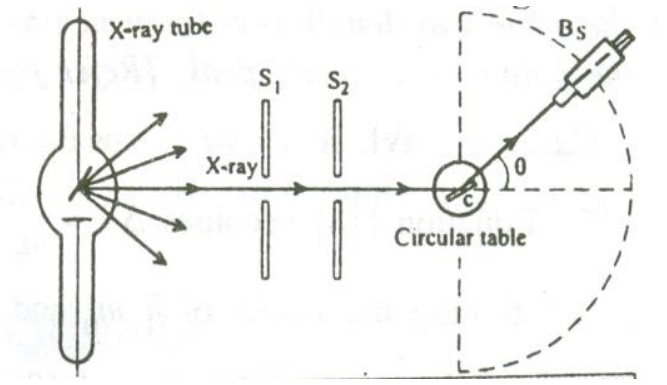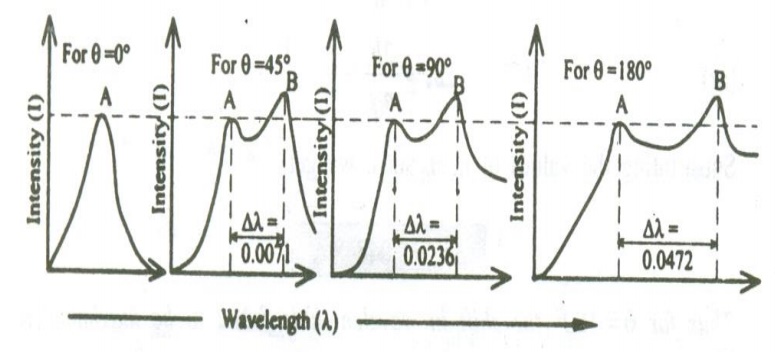Chapter: Physics : Quantum Physics
Experimental Verification of Compton Effect
EXPERIMENTAL VERIFICATION OF COMPTON EFFECT
Principle:
When a photon of energy hγ collides with a scattering element, the scattered beam has two components, viz., one of the same frequencies or wavelength as that of the incident radiation and the other has lower frequency or higher wavelength compared to incident frequency or wavelength. This effect is called Compton Effect and the shift in wavelength is called Compton Shift.
Construction:
It consists of an X-ray tube fro producing X-rays. A small block of Carbon C (scattering element) is mounted on a circular table as shown in the figure.
A Bragg’s spectrometer (Bs) is allowed to freely swing in an arc about the scattering element to catch the scattered photons. Slits S1and S2 helps to focus the X-rays onto the scattering element.

Working:
X-rays of monochromatic wavelength ’λ’ is produced from an X-ray tube and is made to pass through the slits S1 and S2. These X- rays are made to fall on the scattering element. The scattered X-rays are received with the help of the Bragg’s spectrometer and the scattered wavelength is measured.
The experiment is repeated for various scattering angles and the scattered wavelengths are measured. The experimental results are plotted as shown in the figure.
In this figure when the scattering angle θ = 00, the scattered radiation peak will be the same as that of the incident radiation Peak ‘A’. now , when the scattering angle is increased, for one incident radiation peak A of wavelength ‘λ’ we get two scattered peaks ‘A’ and B. here the peak A is found to be of same wavelength as that of the incident wavelength and the peak ‘B’ is of greater wavelength than the incident radiation
The shift in wavelength or difference in wavelength ∆λ of the two scattered beams is found to increase with respect to the increase in the scattering angle.
At θ = 900, the ∆ is found to be 0.0236 0.02424, which has good agreement with the theoretical results. Hence this wavelength is called Compton wavelength and the shift in wavelength is called Compton shift.

Related Topics